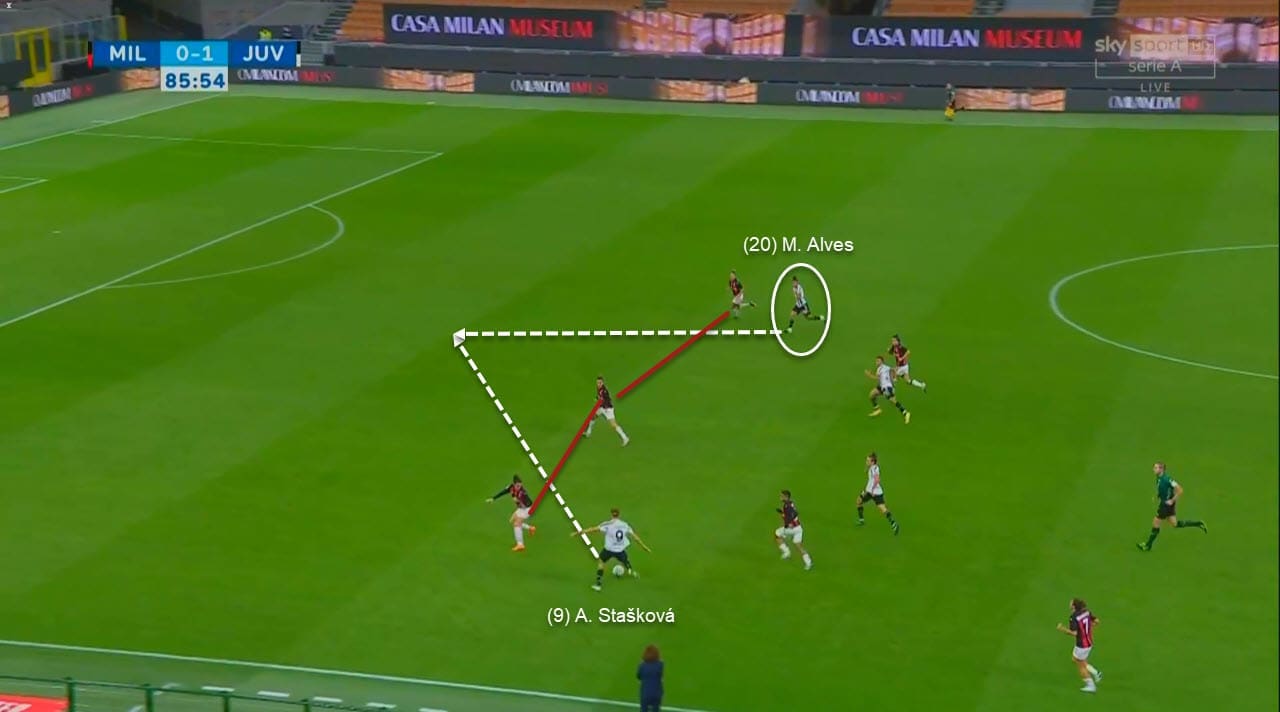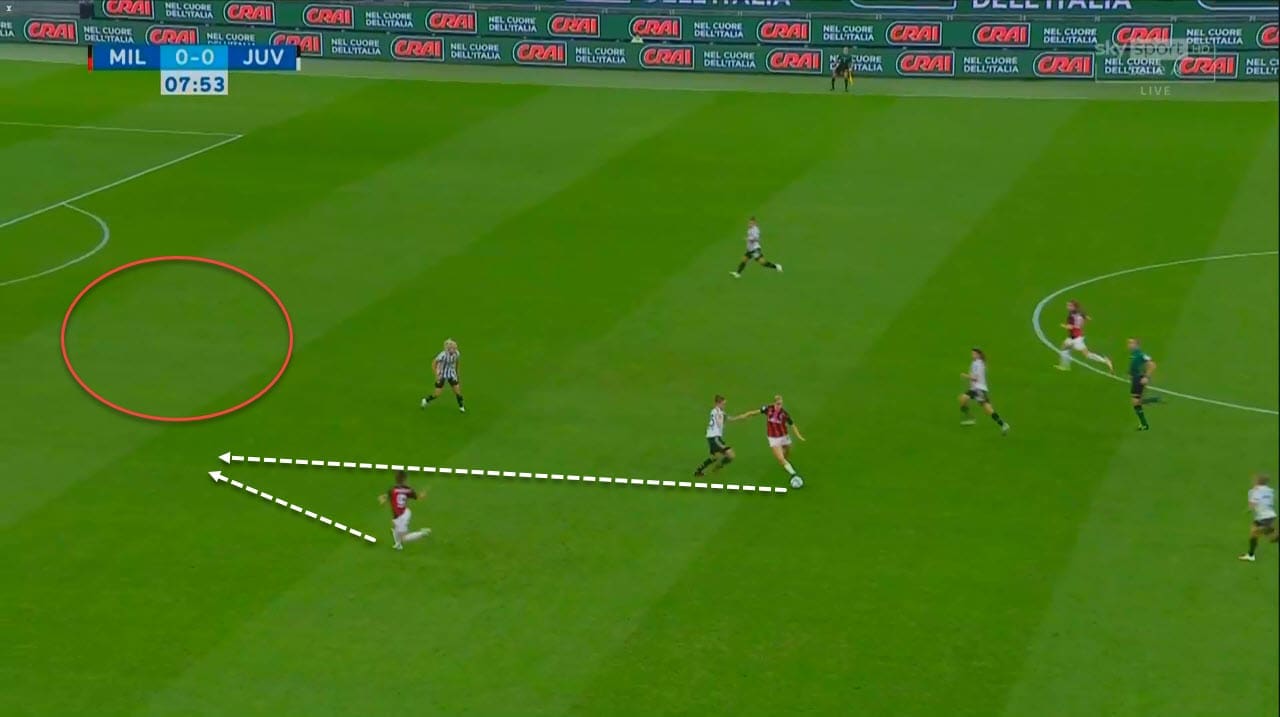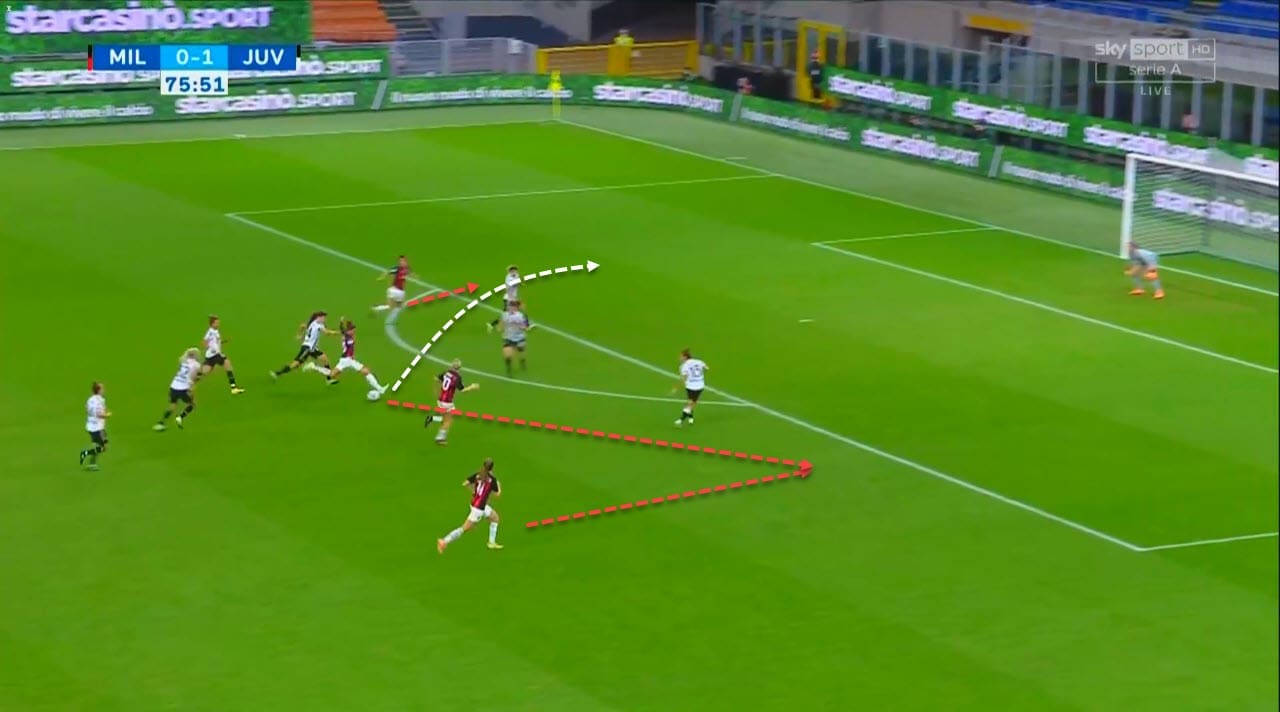Joe Montemurro has been the head coach of Arsenal Women since November 2017 and after resigning from his team at the end of this season, he is going to coach Juventus Women following the departure of Rita Guarino who won four Serie A Women titles, one Italian cup and one Italian Super Cup with the team. This news meant that Juventus and Montemurro are planning to get the team to a higher level and compete with more impact at the European level in order to reach the goals that they set. Montemurro’s time at Arsenal showed that he is a creative, intelligent and adaptable head coach who knows how to deal with the different situations that he encounters while improving the qualities and performances of his players in the way that helps the team win games.
In this tactical analysis, we will explore Montemurro’s tactics, philosophy and how he can apply his ideas to make Juventus stronger especially on a European level since with Guarino they were not able to do much in UEFA Women’s Champions League when they faced some of the bigger teams like Barcelona and Olympique Lyonnais.
Montemurro’s tactics at Arsenal
Montemurro won the FAWSL title of 2018/2019, the FA Cup of 2018, reached UEFA Women’s Champions League Quarter Finals and challenged seriously for the FA Women’s League Cup as well by finishing as runners’ ups in these both competitions. He relied on a plethora of playing systems and formations, including mainly the 4-2-3-1, the 4-3-3 and more while adapting to the opponents he plays against. Montemurro was not an easy opponent for Chelsea and Manchester City in the FAWSL as he was able to beat them several times and prove that Arsenal are a very solid team.
In fact, we can also say that the 4-3-3 formation was Montemurro’s preferred formation at Arsenal with Manuela Zinsberger as a goalkeeper, Lotte Wubben-Moy and Leah Williamson as centre-backs, Katie McCabe as a left-back and Noëlle Maritz as a right-back, Kim Little, Jill Roord and Daniëlle van de Donk as as central midfielders and Beth Mead, Caitlin Foord as wingers to support Vivianne Miedema, the team’s striker.

At Arsenal, Montemurro relied on Miedema a lot in attack to move between the lines and be clinical inside the penalty area, while at the same time he focused on improving the quality of passing and of penetrations of his wingers Foord and Mead, and the result was obvious especially this season. Arsenal finished third in the league and they could have done even better given the quality of squad Montemurro built over these seasons.
Montemurro’s Arsenal relied on excelling at set-pieces as well and this was clear from the number of goals scored especially from corners. And in this regard, Miedema and Wubben-Moy stood out as the best of the team in aerial duels and in scoring from these set-pieces even in complex situations, like you can see in this example.

The players were also trained on moving quickly without the ball especially behind the defensive lines to create the danger, and at the same time, those who are not receiving the pass should advance as well to anticipate the action and wait for their teammate’s pass. Just like you can see below, this usually happens to confuse defenders since Miedema here is the player who moves towards the left wing to meet her teammate’s pass behind the defence while defenders expected her to be waiting inside the box. This sort of movements make Arsenal’s attack more dangerous and it explains partly why Miedema, Foord, and Mead constitute an excellent attack.

How can Montemurro improve Juventus’ playing style
With Rita Guarino, Juventus played according to a 4-3-3 formation that allowed them to get the best out of their players especially in Serie A Women. Yet, they failed to be as competitive as required in UEFA Women’s Champions League, and that’s also partly related to their luck in the draw which gave them one of the toughest teams early in the tournament. Juventus lost on aggregates against Lyon even though they were able to score goals and make the mission a bit complex for the French team.
As you can see below, Juventus do not lack attacking players or ideas. With a mixture of talented and experienced players like Cristiana Girelli, Barbara Bonansea, Andrea Stašková and Lina Hurtig, Montemurro will not find problems upfront and he will only need to train the players to move better without the ball in order to create chances like these with more frequency and especially against teams who use a high defensive bloc.

Breaking defensive lines is already something that Juventus players are used to, yet, they are not always focused in front of the goal and in the final pass. And this can also be a fundamental aspect to focus on during this summer break.
But as you can see below, there is a good chemistry between Juventus’ strikers and the players coming from behind, with Stašková acting like an advanced playmaker here to serve her teammate behind Milan’s defenders.
This just highlights her ability to play the Miedema role and be crucial even when she retreats to midfield. The same applies to Girelli as well who can play the same role, plus, the latter is excellent in offensive aerial duels.

How to improve Juventus’ defence
Juventus’ defence has been fragile on many occasions and the fact that they were able to win the league title does not mean that they have an error-free defence. On the contrary, Juventus’ defensive performances included ups and downs since they conceded a considerable number of goals and could have conceded more if they faced tougher attacking teams in Serie A. For instance, in this example from Juventus vs Milan, the Bianconere could have conceded many goals due to poor defending and wrong marking in some situations. Despite having a number of defensive leaders like Sara Gama and Cecilia Salvai, with an excellent goalkeeper like Laura Giuliani, Juventus will need to work more on their defensive compactness and preventive movements to not lose against teams with quick and efficient players.

Juventus’ defence often stays high since they are used to attacking and facing teams who mainly aim at defending against them and staying at the back to not concede goals.
This affected Juventus in a way that surprised them whenever they played against European teams (And with a lesser degree, Milan in Serie A since they are actually the second best team in Italy). Therefore, Montemurro will need to ensure that his new team adapts tactically whenever they face teams at the same level or at a higher level. This can be done by keeping the balance between attack and defence, obliging midfielders to help in defending against counter-attacks, and more importantly, to know how and when exactly to play with a high defensive bloc and when to retreat and defend. And this would be crucial to avoid dangerous opponents’ counter-attacks.

Moreover, Juventus has a mixture of talented midfielders who are very good at passing and supporting attacks. Valentina Cernoia, Martina Rosucci and Arianna Caruso form a balanced midfield with Cernoia being an excellent passer between the lines and both Caruso and Rosucci to help in intercepting passes and contribute to playmaking by moving without the ball to help the centre-backs and the full-backs when starting build-ups from the back. Nevertheless, some more creativity is needed especially by providing more key passes to the final third, and this is where Montemurro’s role will be crucial in pre-season.
Conclusion
Montemurro’s move to Juventus will more probably be a successful one given not only Montemurro’s coaching experience at a high level but also thanks to his Italian backgrounds and his familiarity with Italian Serie A Women.
His first mission will be to keep Juventus at the top of Serie A Women despite the improvement of many teams’ level especially Milan, Sassuolo and Roma. Then, a more important objective will be to improve Juventus’ performances in UEFA Women’s Champions League to reach advanced stages of the tournament next season.





Comments